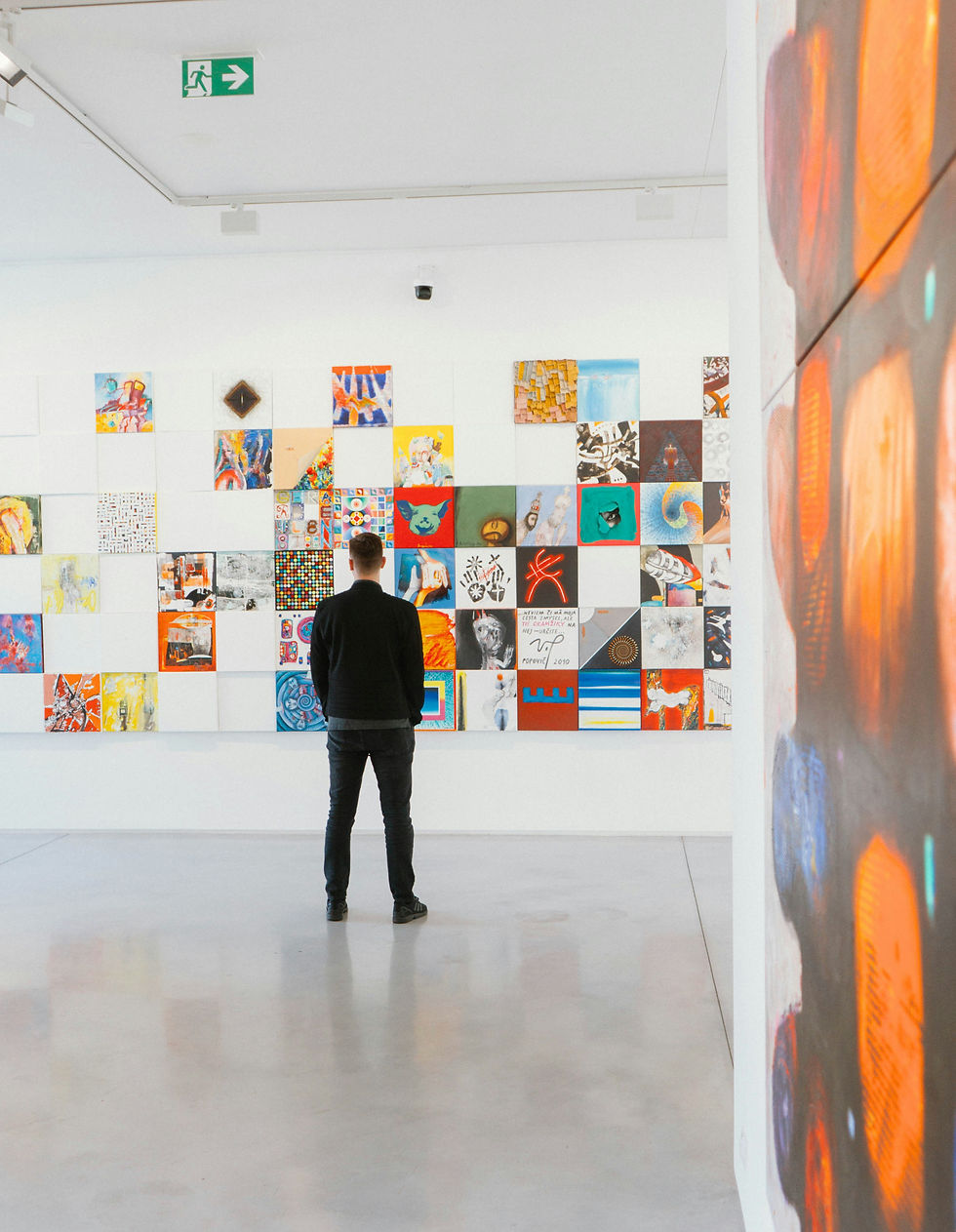- Francisca Theo
- Apr 16
- 3 min read

Art fairs have always been vibrant centers of creativity and commerce. However, the global pandemic sparked profound changes in how these events are organized and experienced. As the art world adapts to this new reality, it's essential to explore the shifts that are reshaping art fairs. This post examines current trends, challenges, and opportunities that will define the future of art fairs.
The Pandemic's Lasting Impact on Art Fairs
The pandemic pushed many art fairs online, and forced organizers to rethink conventional formats. This shift opened doors to broader audiences, allowing galleries and artists to reach people worldwide without needing to be physically present. A notable example is the Frieze Art Fair, which transitioned to an online model in 2020, attracting over 6,000 viewers from diverse regions, compared to 3,000 attendees in previous in-person editions.
While virtual engagement offers significant advantages, it cannot replicate the tactile and immersive experiences of in-person events. The challenge now is how to integrate both digital and physical experiences effectively.

Hybrid Models: The Future of Art Fairs
Hybrid models are emerging as a popular solution for modern art fairs. By blending virtual and physical experiences, organizers can cater to a wider audience. For example, the Art Basel fair adopted a hybrid format, allowing online viewers and in-person attendees to engage simultaneously. This approach not only maintained the excitement of live events but also doubled the potential audience reach.
Hybrid formats provide galleries and collectors the opportunity to connect in new ways, reinforcing the idea that art fairs can remain relevant and flexible in a fast-changing world.
New Engagement Strategies
As safety remains a priority in the post-pandemic environment, art fairs are developing new strategies to engage visitors both online and offline. For instance, using augmented reality (AR) allows attendees to experience installations in unique ways. Some fairs are also offering virtual tours, enabling those unable to attend in person to explore the exhibition from the comfort of their homes.
Furthermore, improving visitor experiences through increased sanitation, timed entry tickets, and socially distanced layouts has become essential. The introduction of personalized experiences, such as artist talks and guided tours, fosters stronger connections between artists, collectors, and the audience.
Financial Recovery and Sustainable Practices
Post-pandemic recovery has led many art fairs to seek new funding sources. Sponsorships, ticket sales, and collaborations with local businesses are crucial for sustaining these events. For example, the recently held Miami Art Week saw a 20% increase in ticket sales compared to previous years, largely due to partnerships with tech companies and local restaurants.
Additionally, sustainability is becoming a vital aspect of art fairs. Many organizers are working to reduce waste, use eco-friendly materials, and promote local artists. The 2022 Venice Biennale’s focus on sustainability drew considerable attention, with 75% of attendees expressing a desire for more environmentally friendly exhibitions. Integrating sustainable practices not only aligns with contemporary values but also enhances the appeal of art fairs.
The Role of Technology
Technology is increasingly central to the art fair experience. Tools like virtual reality (VR) and artificial intelligence (AI) are creating immersive experiences that blend physical and digital realms. For instance, a gallery can use VR to allow potential buyers to visualize artworks in their homes before making a financial commitment.
Adoption of these technologies caters to a younger, tech-savvy audience, enhancing engagement and making the art market more accessible than ever.
Global Perspectives and Local Impacts
As art fairs evolve, recognizing the importance of local context is crucial. Global exhibitions are starting to highlight regional artists and cultures, enriching the art world's diversity. The pandemic showcased the resilience of local art communities, which often became vital support systems during crises.
For example, the Brooklyn Art Library organized collaborative art projects featuring local artists during lockdowns, allowing them to stay connected with their communities. Promoting local talent while maintaining global partnerships can deepen local engagement while enhancing the art fair's international relevance.
The Future of Art Fairs
Looking ahead, art fairs must remain adaptable to societal shifts. While the pandemic created challenges, it also spurred innovation in how art is showcased and sold.
The future of art fairs will hinge on combining digital experiences with in-person connections while focusing on audience preferences and sustainable practices. As these events continue evolving, they will foster a more inclusive, diverse, and accessible art world.
Final Thoughts
Art fairs find themselves at a pivotal point, having transformed significantly in response to the pandemic. By adopting hybrid formats, utilizing technology, and focusing on innovative engagement strategies, art fairs hold great potential for future growth.
These evolving events not only connect artists to larger audiences but also prioritize sustainability and community involvement. The future presents opportunities that could enrich the art world for everyone involved, ensuring art fairs remain meaningful and relevant in our rapidly changing cultural landscape.






































